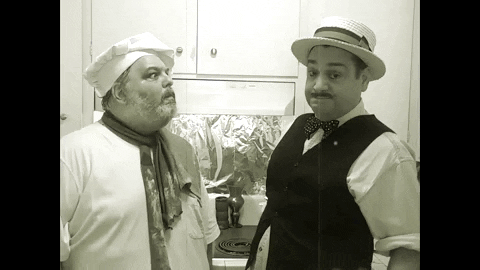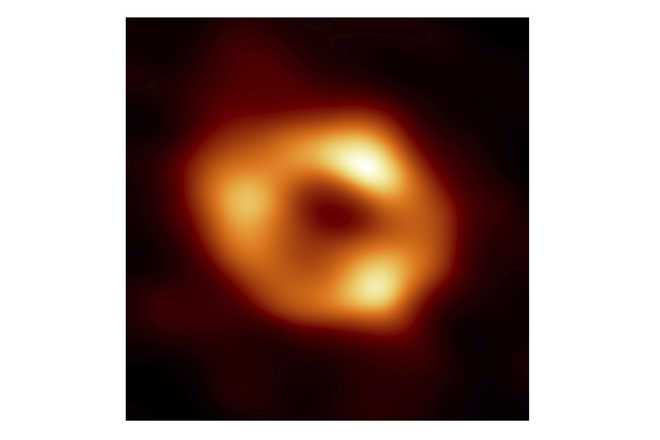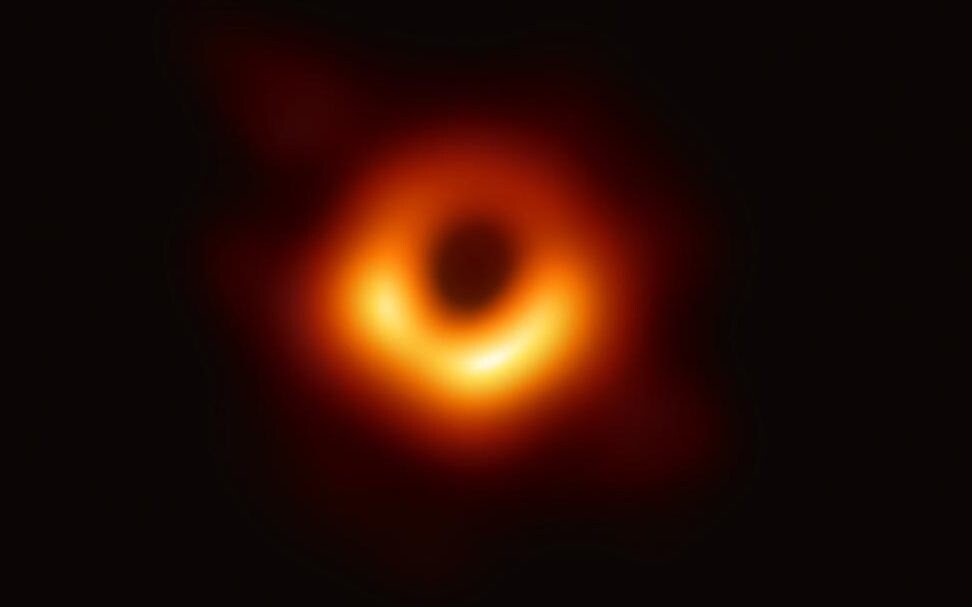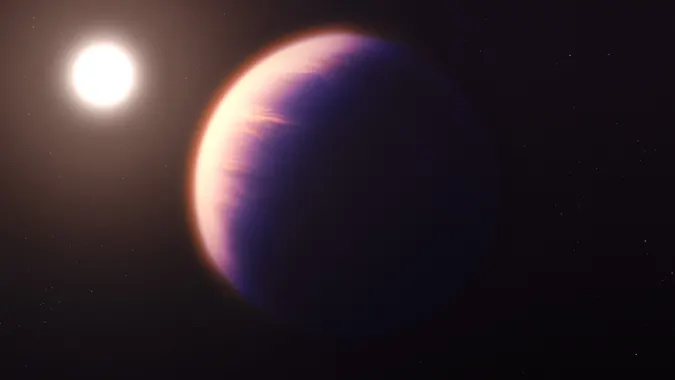You are using an out of date browser. It may not display this or other websites correctly.
You should upgrade or use an alternative browser.
You should upgrade or use an alternative browser.
Baby the stars shine bright...
- Thread starter James
- Start date
More options
Who Replied?MoonFlier
Well-known member
- MBTI
- INFJ
- Enneagram
- 5w4
My sort of astronomy
Haha! We're going to smack a satellite into a rock and see what happens.
Seems to me this is just a proof of concept demonstration to get more funding.
Didn't Musk waste funds launching a Tesla out there in orbit? I'd pay a buck to see them hit that by "accident". I wonder if there's Geico coverage out there.

MoonFlier
Well-known member
- MBTI
- INFJ
- Enneagram
- 5w4
In more recent news: The first images of our own. I love the three bright spots and wonder if it's a trick of the camera, or if there is something unique going on there around the black hole.Fascinating announcement earlier today.
Another article says that it’s in the middle of a nearby galaxy 55 Million light years away. Funny how the concept of nearby changes with scale lol.

The image of the black hole as captured by eight telescopes on Earth
10 APRIL 2019 • 3:08 PM
- Sarah Knapton
A black hole surrounded by swirling ring of fire has been pictured by scientists for the first time in an image described as ‘the gates of hell, at the end of space and time.’
The phenomenon which has never been observed before shows superheated matter being pulled towards the event horizon after which nothing can escape.

Event Horizon Telescope Collaboration via AP
This image released by the Event Horizon Telescope Collaboration, Thursday, May 12, 2022, shows a black hole at the center of our Milky Way galaxy. The Milky Way black hole is called Sagittarius A*, near the border of Sagittarius and Scorpius constellations. It is 4 million times more massive than our sun. The image was made by eight synchronized radio telescopes around the world.
It took 5 years to get that image. The spots are not in every image taken, rather they're the result of computational averaging of all images.
Last edited:
John K
Donor
- MBTI
- INFJ
- Enneagram
- 5W4 549
I don’t think it’s a trick of the camera because of that averaging technique. It might be some artefact of the maths technique or it might just be random noise. The latter is more unlikely the more samples go into the averaging.In more recent news: The first images of our own. I love the three bright spots and wonder if it's a trick of the camera, or if there is something unique going on there around the black hole.

Event Horizon Telescope Collaboration via AP
This image released by the Event Horizon Telescope Collaboration, Thursday, May 12, 2022, shows a black hole at the center of our Milky Way galaxy. The Milky Way black hole is called Sagittarius A*, near the border of Sagittarius and Scorpius constellations. It is 4 million times more massive than our sun. The image was made by eight synchronized radio telescopes around the world.
It took 5 years to get that image. The spots are not in every image taken, rather they're the result of computational averaging of all images.
I doubt it’s the former either, simply because it’s pretty well understood. Years ago, I looked at the idea of trying out a digital camera on a telescope. The specialised sensors used were much lower resolution than in normal cameras and I couldn’t understand how such detailed pictures could be generated with them. Then I realised that each end product image recorded was made up of lots of digital shots all added together to make up a much higher resolution than the actual sensor. Of course astronomical things don’t move very much in human time - so as long as the telescope corrects for the earth’s movement you can take lots of separate shots over as long a time as you like then add them together. This technique averages away any distortion created by the atmosphere as well. So in fact the same sort of technique has been used for almost all the spectacular images we see from the big deep space telescopes. They even combine images from different telescopes to eliminate artefacts created by the optics of any one of them and to increase apparent aperture and resolution. It’s amazing stuff that I’ve only glanced over really.
- MBTI
- ENFP
- Enneagram
- 947 sx/sp
Check my recent What YouTube Videos Are You Watching Right Now post for a video from Veritasium that well explains the “three dots” and imaging.
Cheers,
Ian
Cheers,
Ian
John K
Donor
- MBTI
- INFJ
- Enneagram
- 5W4 549
Good find! That really confirms that the dots are real and not a feature of the detection equipment.Check my recent What YouTube Videos Are You Watching Right Now post for a video from Veritasium that well explains the “three dots” and imaging.
Cheers,
Ian
John K
Donor
- MBTI
- INFJ
- Enneagram
- 5W4 549
interesting experiments about the way life could get started pretty quickly in any suitable environment. A self replicating system based on RNA has sounded very plausible for decades but these show how it might actually happen from a practical perspective.
Footnote: it’s interesting and amusing how important parasites are in these life-evolving-in-a-bottle experiments. There’s got to be a metaphor waiting to evolve out of there too.
Footnote: it’s interesting and amusing how important parasites are in these life-evolving-in-a-bottle experiments. There’s got to be a metaphor waiting to evolve out of there too.
InfernoMink
Permanent Fixture
- MBTI
- INFJ-A
NASA TV live feed…they are revealing more JWT images…wooooooo!!!
https://www.nasa.gov/multimedia/nasatv/#public
https://www.nasa.gov/multimedia/nasatv/#public
- MBTI
- INFJ
- Enneagram
- 954 so/sx
John K
Donor
- MBTI
- INFJ
- Enneagram
- 5W4 549
This video is over an hour long, but is a really fascinating discussion on recent thinking about the links (wormhole entanglements  ) between gravitation and quantum mechanics theories. It does assume some 'interested layperson' knowledge of the history of thinking in these topics, but doesn't need specialist expert knowledge.
) between gravitation and quantum mechanics theories. It does assume some 'interested layperson' knowledge of the history of thinking in these topics, but doesn't need specialist expert knowledge.
- MBTI
- ENFP
- Enneagram
- 947 sx/sp
- MBTI
- ENFP
- Enneagram
- 947 sx/sp
John K
Donor
- MBTI
- INFJ
- Enneagram
- 5W4 549
They are talking about Friday now.Pad 39B mishaps?

Any one have updates on when they are lifting off?




